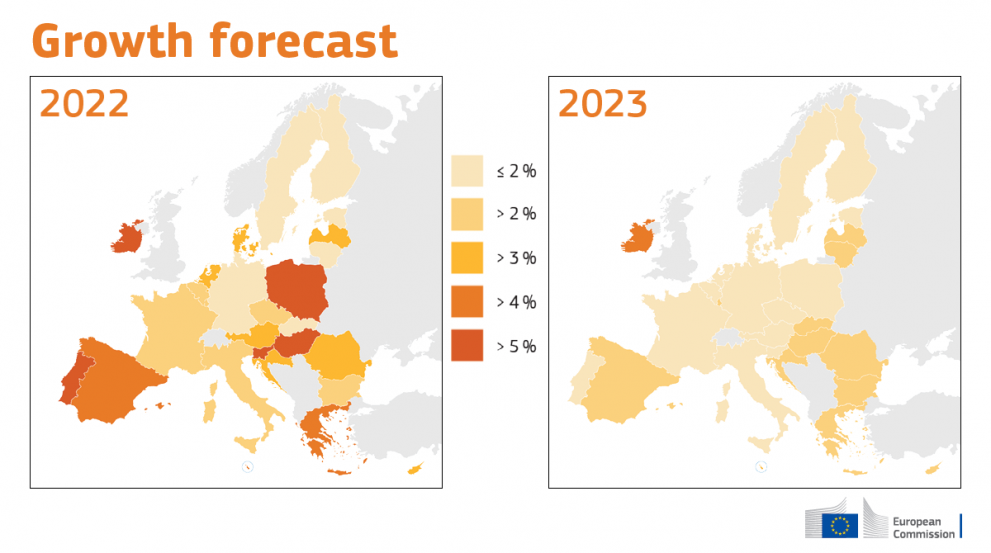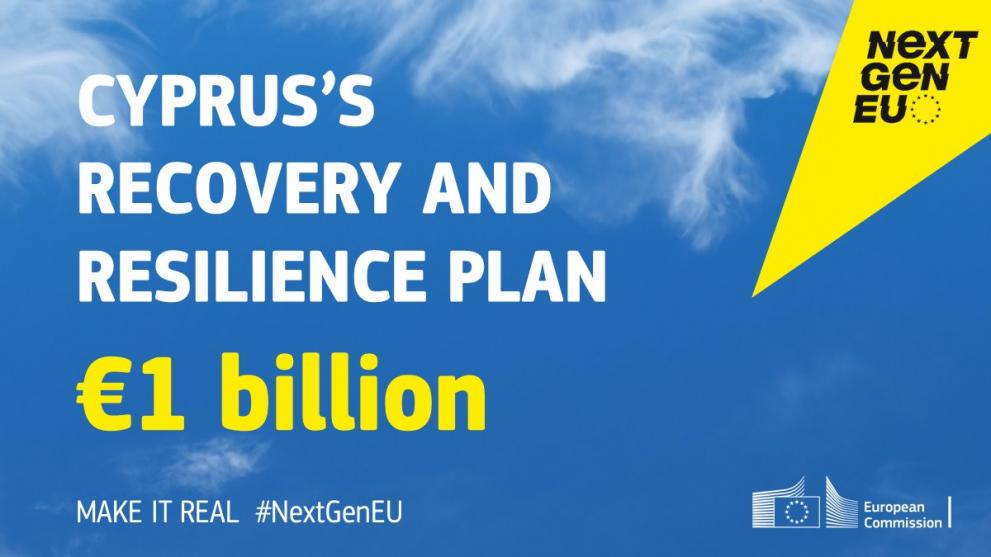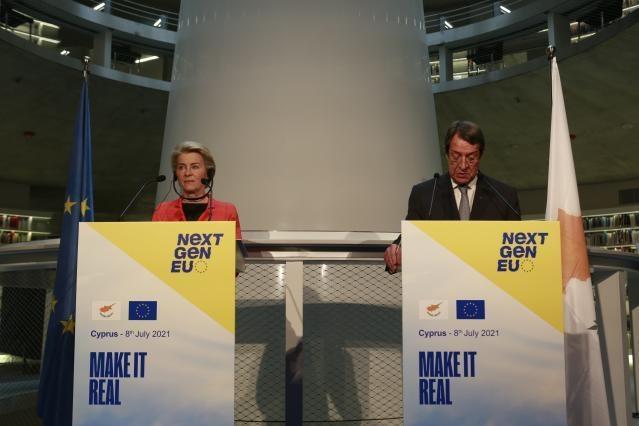The Recovery Plan for Europe in Cyprus
In December of 2020, the leaders of all European Union countries, the European Parliament and the European Commission agreed on a Recovery Plan to help repair the economic and social damage brought about by the COVID-19 pandemic.
Through the EU’s long-term budget, together with the temporary NextGenerationEU instrument, a total of €2.018 trillion will help build a greener, more digital and more resilient Europe.
What is in the EU Recovery Plan for Europe?
The long-term EU budget, which was topped up to meet the COVID-related challenges, ensures that more than 50% of the Recovery Plan is dedicated to modernisation, through research and innovation, climate and digital transitions, and preparedness, recovery and resilience.
This forward-thinking package, in line with the European Green Deal, will fight climate change. 30% of the EU budget will be spent on this priority. It will also pay specific attention to biodiversity protection.
NextGenerationEU will provide an additional €806.9 billion, of which € €723.8 billion (in current prices) will be delivered through the Recovery and Resilience Facility (RRF) in the form of loans and grants to support the reforms and investments undertaken by EU countries. The European Commission has also implemented a new Technical Support Instrument (TSI) to provide tailor-made expertise for EU countries to design and implement reforms. Read more about the TSI and some of the reform projects being supported.
The European Semester, which is the framework to coordinate and monitor economic policy, has also been adapted as it is closely linked to the Recovery and Resilience Facility, and will ensure that reforms are an integral part of the recovery for each country.
To access funds from the Recovery and Resilience Facility, Member States provide a national recovery and resilience plan, in which at least 37% of expenditure is allocated to climate and 20% to digital investments and reforms, and which must be implemented by 2026.
More on the recovery plan for Europe
European Semester 2021 – an exceptional cycle
EU funding and tenders programmes and application procedures
The Recovery Plan for Cyprus
Russia's war of aggression against Ukraine continues to negatively affect the EU economy, setting it on a path of lower growth and higher inflation compared to the Spring Forecast. The Summer 2022 (interim) Economic Forecast projects that the EU economy will grow by 2.7% in 2022 and 1.5% in 2023. Growth in the euro area is expected at 2.6% in 2022, moderating to 1.4% in 2023. Annual average inflation is projected to peak at historical highs in 2022, at 7.6% in the euro area and 8.3% in the EU, before easing in 2023 to 4.0% and 4.6%, respectively.
The Cypriot economy surprised on the upside in the first quarter of 2022, mainly as a result of the faster-than-expected recovery of tourism and the continuing expansion of exports of other services, notably business services and IT. Arrivals of tourists and revenues increased considerably in the first months of 2022 and reached around 75% of pre-pandemic levels.
The prospects for the tourism sector remain positive for the summer season, based on data on planned international flights and surveys on reservations for tourist accommodation, despite a sizeable loss of the historically important tourism from Russia. However, weakening consumer confidence combined with soaring inflation and increasing interest rates are expected to result in a considerable slowing down of households’ consumption and investments in the second half of the year.
On an annual basis, real GDP growth in Cyprus is forecast at 3.2% in 2022 and 2.1% in 2023, which is stronger than the EU average. The main drivers of growth are expected to be domestic demand and, albeit to a lesser extent, net exports of services. Investment, notably in construction, is expected to suffer from the gradual tightening of financial conditions, persistent supply disruptions and exceptionally high prices for construction materials. On the positive side, the implementation of the Cypriot Recovery and Resilience Plan is expected to support investment. Private consumption is projected to be adversely affected by high inflation and the erosion in purchasing power, even though households’ income is supported by measures adopted by the government to address high energy prices and the partial indexation of wages to be applied in January 2023. HICP headline inflation is forecast to average 7% this year in Cyprus and to decelerate to 3.3% in 2023, in line with the assumption that price pressures from tight commodity markets will ease next year. Significant uncertainty and downside risks to the growth outlook remain, in particular as tourism and other export-oriented services sectors are vulnerable to the adverse global impact of Russia’s ongoing war of aggression against Ukraine and to the evolution of the COVID-19 pandemic.

What’s in the Recovery Plan for Cyprus?
NextGenerationEU, the EU’s temporary recovery instrument, is a strong financial incentive for Cyprus to pursue investments and reforms necessary for coming out of the pandemic crisis stronger.
- Cyprus is set to receive an estimated €1 billion in Recovery and Resilience Facility grants, and the availability of an estimated €1.5 additional Recovery and Resilience Facility loans.
- The Recovery and Resilience Plan for Cyprus was submitted on 17 May and received the Commission’s positive opinion on 8 July. It consists of 5 Policy Axes, composed in total of thirteen components. It amounts to €1 206 million, of which €1 006 million are grants and the remaining are loans. The Plan is well-balanced between reforms (58) and investments (75). It addressed a substantial part of the Country Specific Recommendation to Cyprus (2019 and 2020), and a significant part is dedicated to address the green (41% of the Plan’s total expenditure) and digital transition (23%).
Additional EU funds for Cyprus:
- There will also be €112 million available in 2021 under REACT-EU and €102 million from the Just Transition Fund.
- Cyprus will also receive €959 million in Cohesion Policy allocations from the latest long-term EU budget, as well as just over €366 million in direct payments from the European Agricultural Guarantee Fund (EAGF). There will also be €183 million available through the European Agricultural Fund for Rural Development.
- The European Commission has also disbursed €603 million in financial support to Cyprus under the SURE instrument. The support was provided in the form of loans granted on favourable terms and will assist Cyprus in covering the costs related to its Temporary COVID-19 Wage Subsidy Scheme.

Delivering Cyprus’ Recovery Plan
The first draft of the Plan was submitted in January 2021. Based on the summary of the consultation process included in the Plan of Cyprus, the Cyprus Government carried consulted all relevant stakeholders such as social partners, civil society organisations and youth organisations in the preparation phase of its national Recovery and Resilience Plan. Also, the Cypriot Economy and Competitiveness Council has been consulted and the Parliament has been regularly informed about the content of the plan.
The final Plan was officially submitted to the European Commission on 17 May 2021. The Commission issued a positive opinion on the Plan of Cyprus on 8 July 2021.

Related links
Thaleia 2021-2027 - Presentation on 08.07.2022, Constantinos Petrides, Minister of Finance
Recovery and resilience plan for Cyprus | European Commission (europa.eu)
Questions and Answers: European Commission endorses Cyprus's recovery and resilience plan
Recovery and Resilience Facility: Questions and Answers
Factsheet on Cyprus' recovery and resilience plan
Staff-working document accompanying the proposal for a Council Implementing Decision
Recovery and Resilience Facility
Recovery and Resilience Facility Regulation
NextGenerationEU: European Commission disburses €157 million in pre-financing to Cyprus
